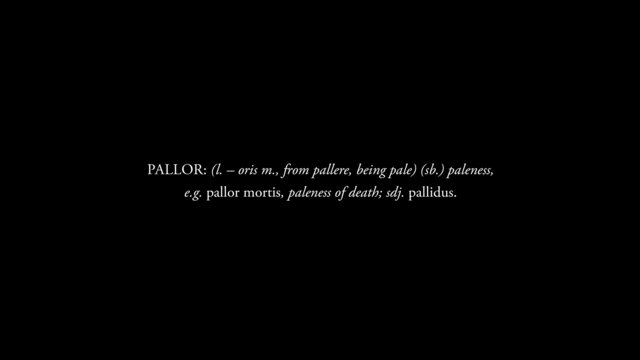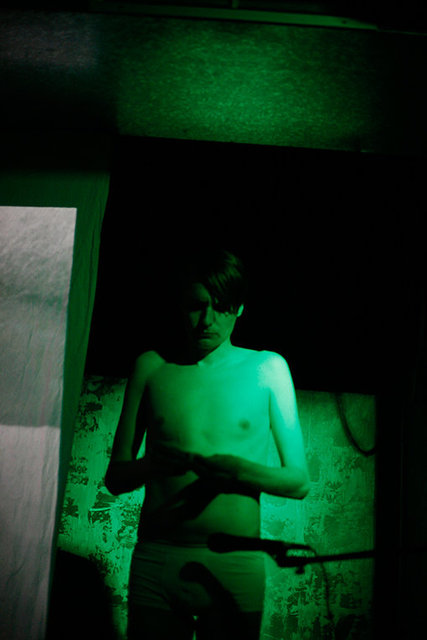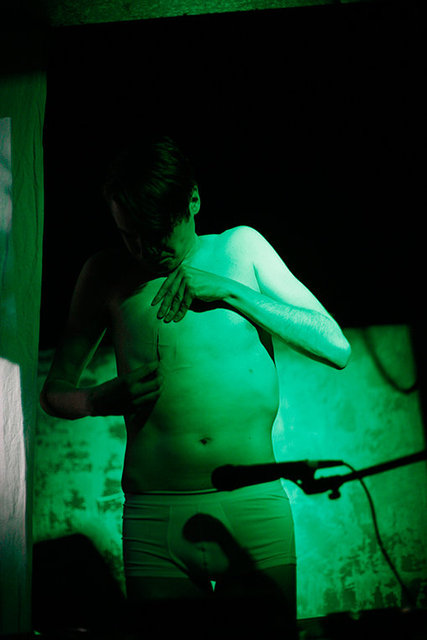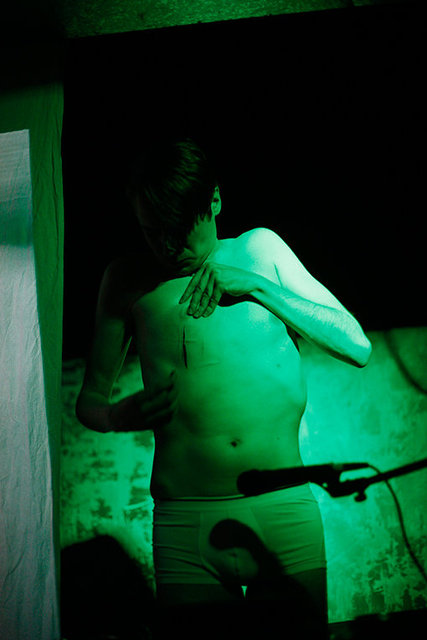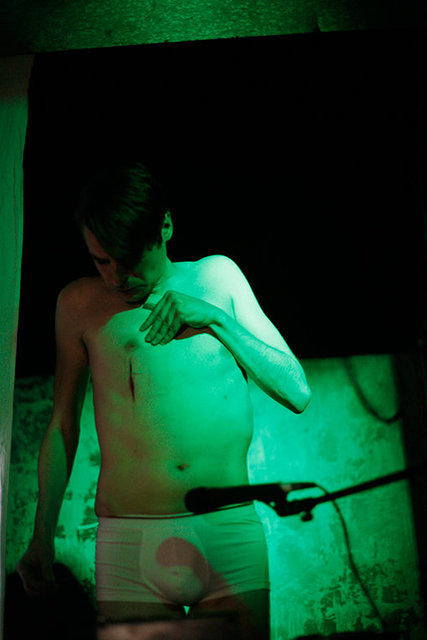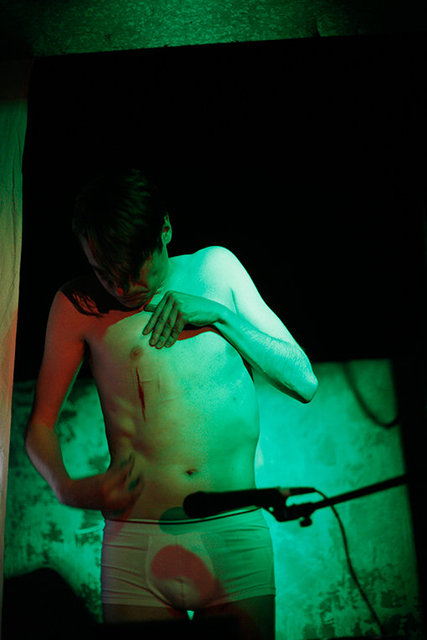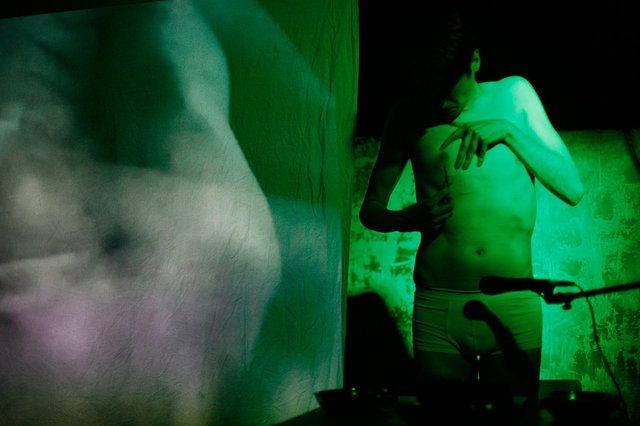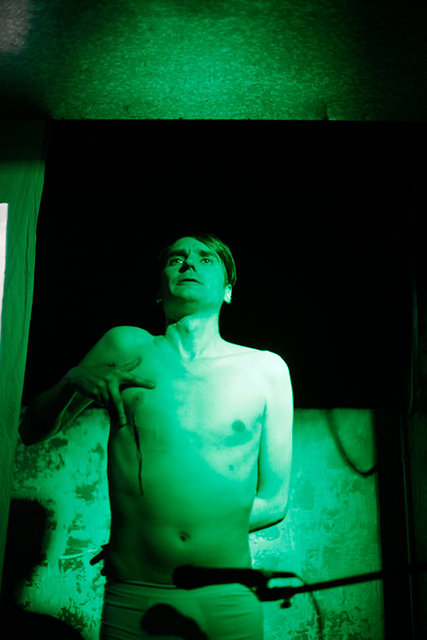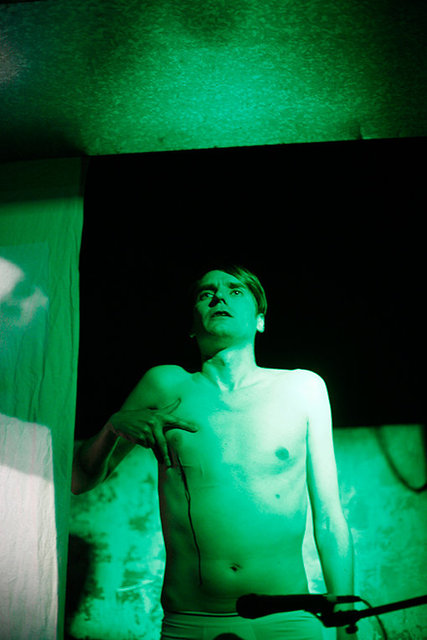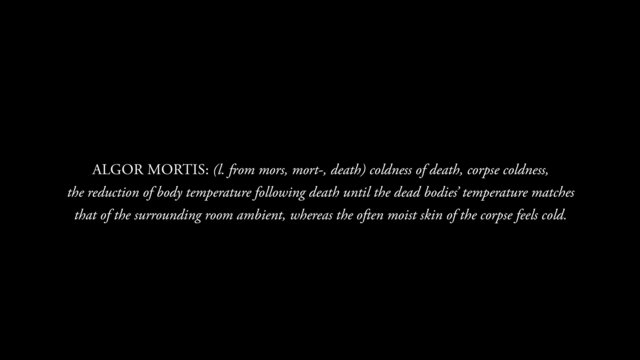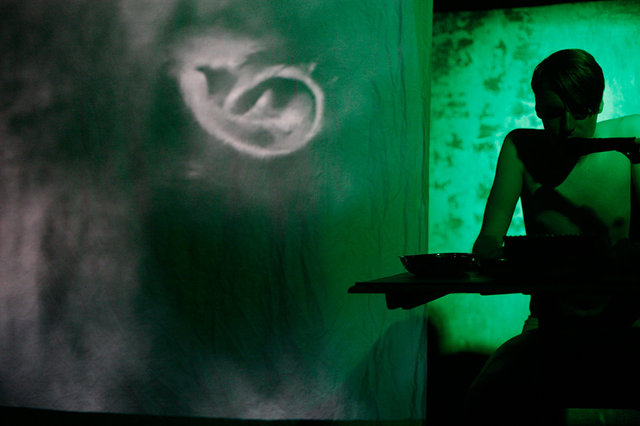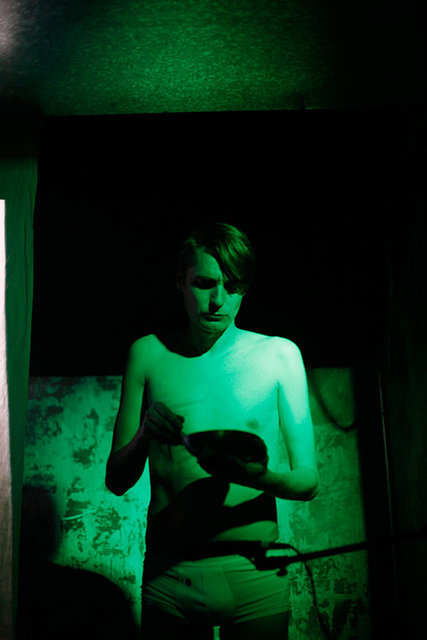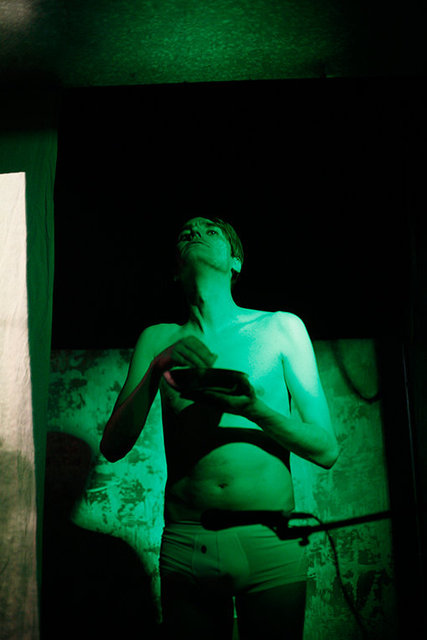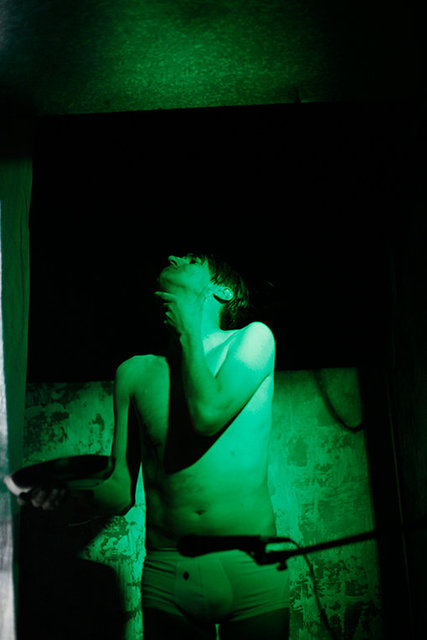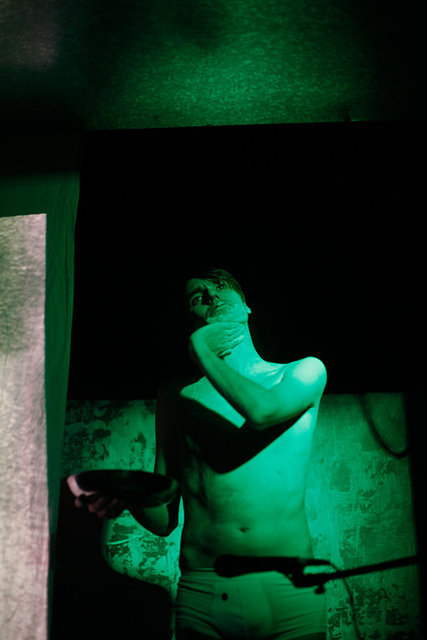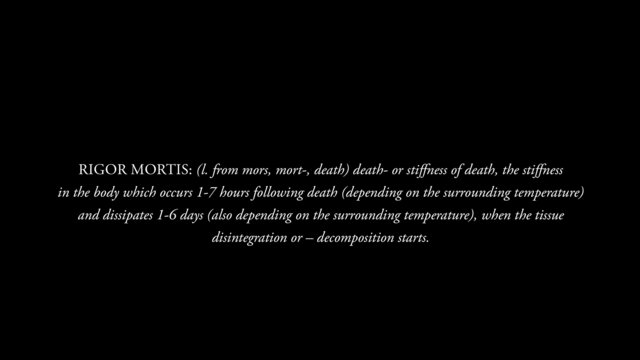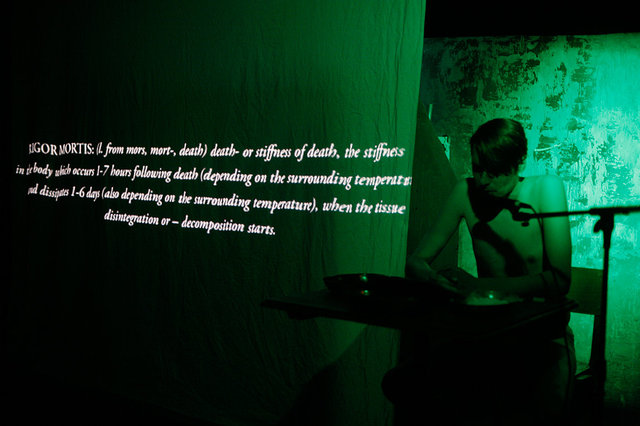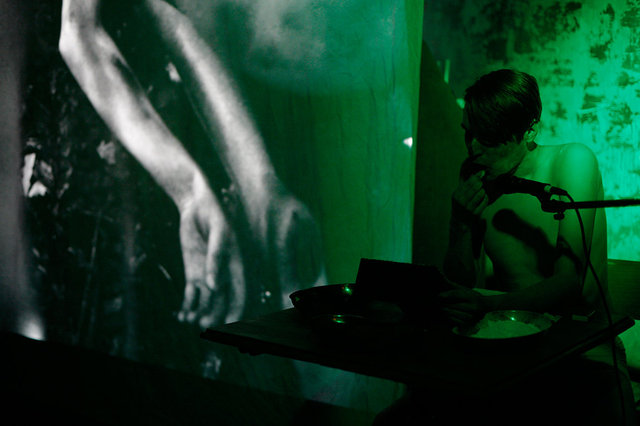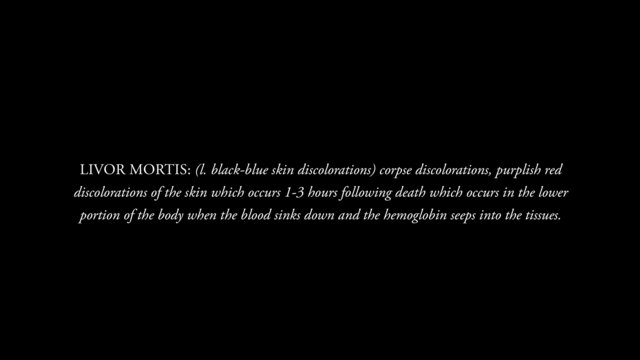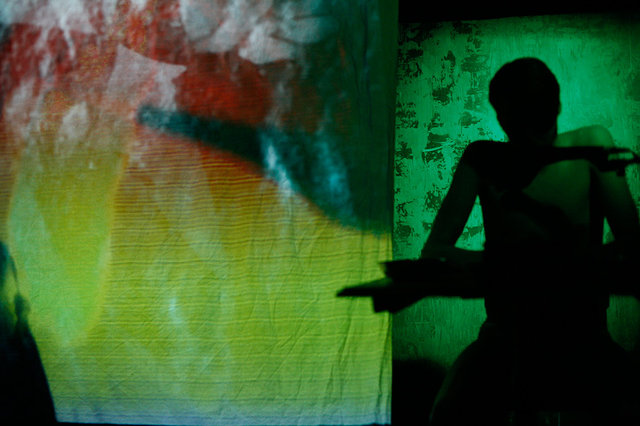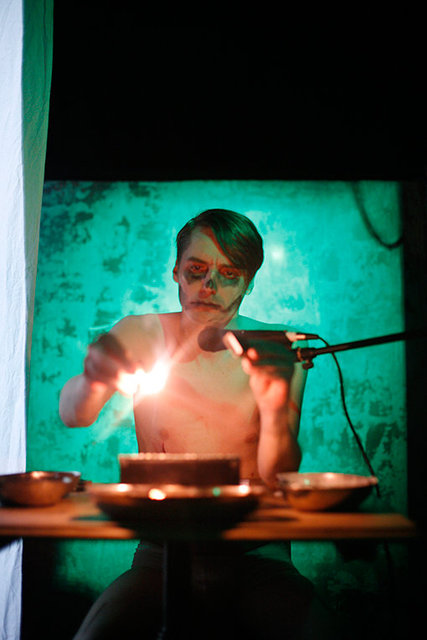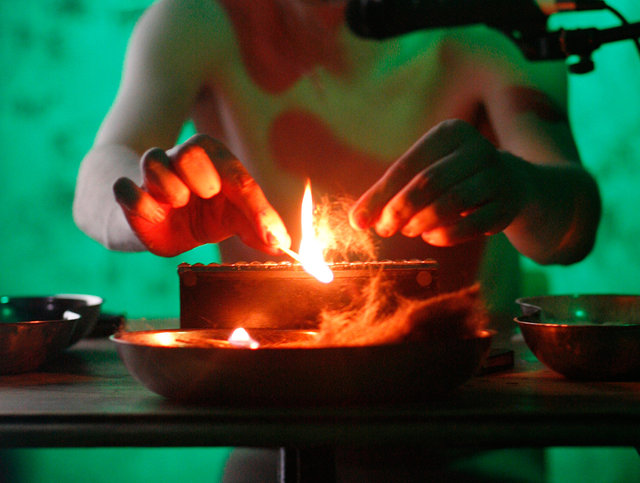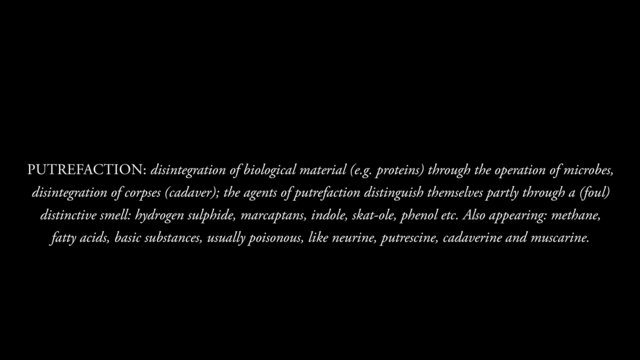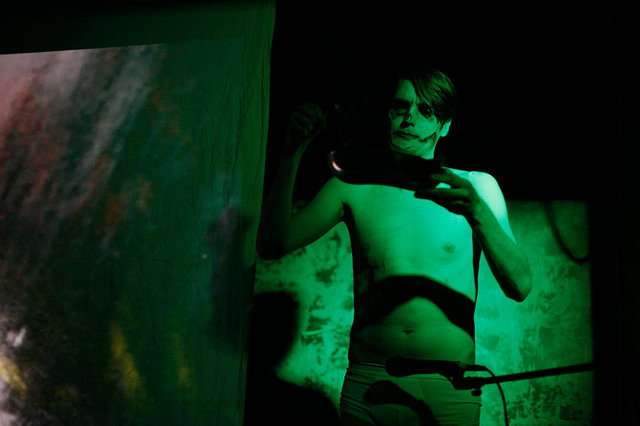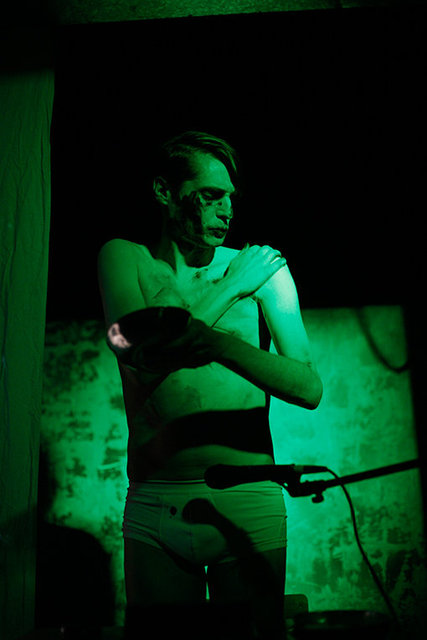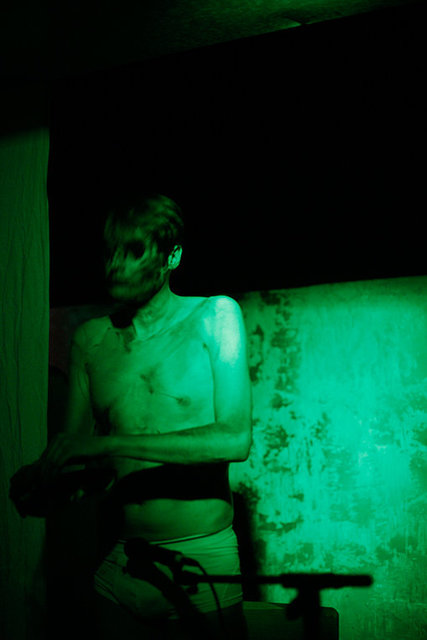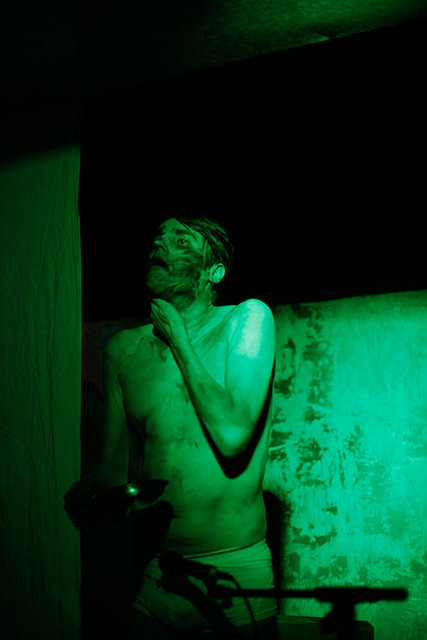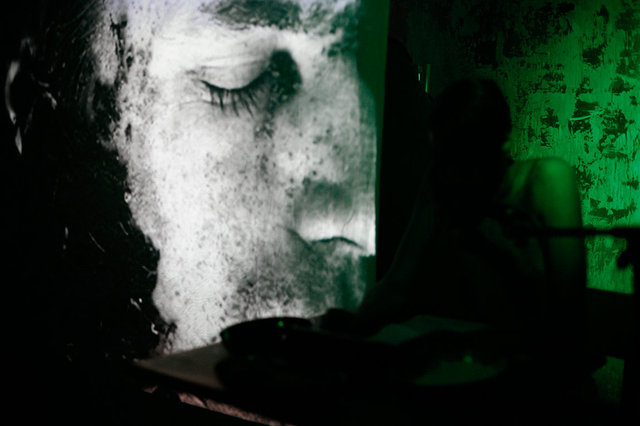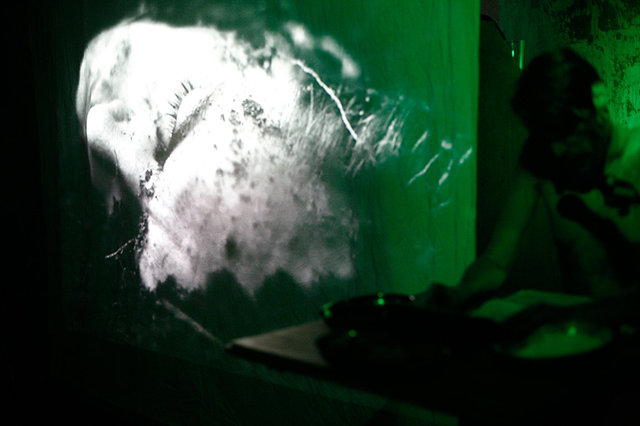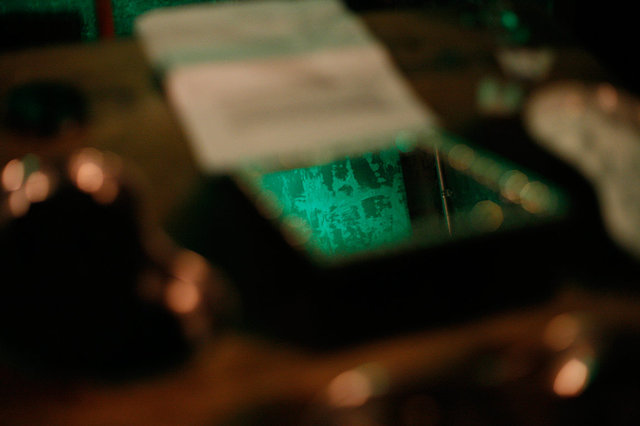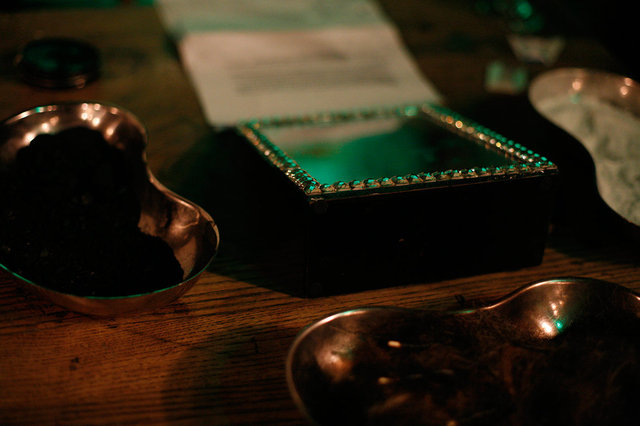TO PUTREFACTION - Performance
To Putrefaction - Performance A big projection screen showing outtakes from Karolina's Island of Death. A table and a chair located at the edge of the stage, left corner. On the table stand/lies: a razor blade, a box of matches, some eye shadow, a hand mirror, and three kidney shaped bowls, bowl 1 contains talcum powder, bowl 2 contains human hair, bowl 3 contains black coal mixed with ashes, -------------------- My earliest childhood wonderings and speculations about death and the hereafter. Basically, there could only be three options: either you go to heaven, to hell, or you dissolved into a heap of crawling maggots and insects that would scatter and then transform into soil. Still these where just conceptions: the state of death didn’t feel like anything tangible or permanent. I started to have nightmarish thoughts about immortal bodies floating in orbit around asteroids in space after the inevitable global catastrophe that had finally obliterated the Earth. Immortal bodies lack the privilege of suicide. What would be done and what should be done to my dead body? Organ donation was totally out of the question, as was cremation. I was determined to keep my body as intact as possible. If there was no entity inside the broken body, at least it would transform into another form of organic life, and it seemed important that the origin, the body, had to be intact and gathered in the same place. I still get an uneasy feeling when I visit Goya’s grave knowing that his skull is missing. 2 I had especially during my earliest teenage years, a notion of the world as something that only existed from within and through me, a world that was being fabled and perceived by me alone. A world in which I was the absolute, sole existing entity, a centre, where everything around me – humans, nature, edifices – were props that I had put there, my own fictitious chimeras. As an uncovered incubated brain, a single naked body floating through an empty universe I dreamt up movements, time and the course of history. Everything had become an extension of my body, my thoughts and fantasy and everything would disappear when I finally shut down and left my universe. 3 During my mid teens I became obsessed with the Norwegian black metal band Mayhem’s lead vocalist Per Ohlin aka Dead. To me he was the embodiment of all my juvenile devotions. His pathological obsession with death and putrefaction proved itself as a theatrical, destructive force mainly directed inwards, towards his own body. He seemed to have lived and distilled the world through a morbid fantasy which he had nourished since his earliest childhood years. The body is visible from the waist up, it’s slumped on an unmade bed, his profile share a certain resemblance to my own and the face displays a peculiar indifferent expression, the top of his head, just above the forehead is missing as if it has been removed surgically with a saw, bloody tufts of hair are still left on the back of the head, the brain tissue has poured out on the white sheets where a blood stained kitchen knife and the shotgun lies. To me such a monumental act would have required a more aesthetically approach than the messiness Per had chosen. First of all the body would have to be preserved as intact as possible which of course would exclude a blast against the head, the heart would be a better choice whereas the damage would be unnoticed when the body was being displayed on Lit de Parade. 4 A new obsession, a new body: the representation of the dead body, my body. Beautiful icons, martyrs and suicides became obvious mirror reflections and standards for the way my own corpse should be exhibited and depicted. The Cult of the Young Man was born – a compulsive fixation with simulated, carefully arranged death – the beautiful, emaciated corpse akin to Holbein’s depiction of Christ’s body in the tomb. In my staged fantasies the naked, ‘wounded’ body was the focus of attention. A soothing mixture of narcissistic masturbation and self-loathing became a heroic, even erotic virtue: the beautiful self-imposed resignation of the self. My mirror reflection became a doppelgänger, the real me, and his act of dying would add the final brick to an unfinished masterpiece – the total work of art. 5 I chose to believe that several artist have turned the aesthetic destruction inwards by staging poetic suicides as a closure to a mayor body of work. Their lives would be read like straight lines, their works indicated as dots upon these lines which reach contextual perfection in death: the last masterpiece. The protagonist’s life becomes a real life drama, his action, work and achievements are enacted as chapters in a novel or tracks on a concept album. The final act of self-annihilation would be his last sublime creation. I don’t believe in enlightenment, or final catharsis, only further titillation, mental masturbation, and more trophies to put on the shelf.

